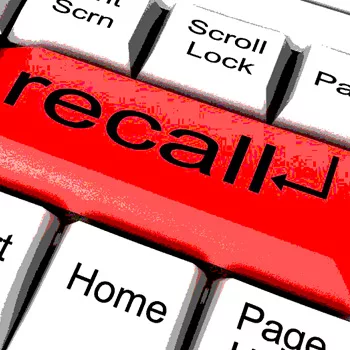Automating Systems is Key to Traceability

Imagine you’re a plant manager who was just notified that your company’s product is contaminated and must be recalled—an insurmountable task if your company is still using traditional paper records to track production and distribution. Safeguarding consumers and customers from food products that might do them harm is the focal point for a company during a recall. But having to manually flip through huge stacks of paper to identify exactly which lot number was contaminated, what plant it came from, what day, shift and time it was produced and to which grocery stores it was shipped, is a costly and time-consuming task, with a large margin for error. To avoid going through excruciating details when time is of the essence, many manufacturers will simply recall every item that was produced within a certain timeframe from every store. Although this approach may be less time consuming, it causes unnecessary waste in the form of food and costs, and could cause a delay in getting the actual contaminated products off the shelves because precious resources are being spent ridding stores of the good products.
Producing and distributing high quality products is a core competency of most food and beverage manufacturers. Equally as important are automated feedback loops and auditing mechanisms to prevent disruptions in service to the customer, even when things don’t go according to plan. By automating systems and records, manufacturers can improve plant efficiency, product quality and food safety, which all collectively help reduce business costs and minimize impact when product recalls occur. These recall costs can range from recovering and destroying products, taking products off shelves, time required to review products in the plant, and the time to prepare for annual audits.
According to the U.S. Food and Drug Administration (FDA), 135 food recalls were documented in the third quarter of 2012, a 53% increase over the second quarter, as well as a 141% increase over the same quarter in the prior year. On average, there is approximately one food product recall every day. With heightened public focus on food safety, manufacturers are under increasing pressure to have better insight into the food and beverage products leaving their facilities. As a result, they need to improve their risk prevention and reporting methods, best accomplished by automating their systems. However, despite the rise in recalls, many manufacturers are still using traditional paper reporting methods that require tedious, costly manual processes when contamination occurs.
In the fall of 2012, Sunland Inc.’s peanuts, peanut butter, cashew butter and almond butter products—in the form of either Sunland branded products such as peanut butter or as an ingredient in products such as granola bars, cookies and ice cream produced for other companies such as Whole Foods, Trader Joes and General Mills—were linked to a Salmonella outbreak. As a result, Sunland recalled everything produced from their peanut butter plant since March 2010—more than 2 years worth of products. It’s not yet clear what the final procedural and financial impact will be to Sunland, as well as to the other manufacturers they supply. According to the Capturing Recall Costs report led by the Grocery Manufacturers Association (GMA), “For companies that have faced a recall in the past 5 years, 77% of respondents estimated the financial impact to be up to $30 million dollars; 23% reported even higher costs.” If there is no automated system in place, it is virtually impossible to determine and isolate every lot number that was contaminated. In addition, when a problem occurs during the production process, operators are called away from their normal documentation responsibilities so they can address the issue. As if that isn’t enough to throw a wrench into the company’s daily operations, a massive recall can damage a brand name, as well as an entire industry. In the previously mentioned GMA report, the survey respondents suggested that the highest recall costs came from business interruption. According to one respondent, “Business interruption is not only the time to get production back up and running, but also time to get the customer to buy the product again.”
By implementing automated reporting systems, companies can easily and more quickly determine which lots were contaminated and recall only those affected products. This targeted approach can improve efficiency, reduce costs and avoid unnecessary or excessive recalls. Automated data collection systems or historians are one way for manufacturers to aggregate and manage the information from automated processes, procedures and Hazard Analysis and Critical Control Points plans. These systems are fundamental in enabling producers to quickly identify the root cause of a problem when a bad batch is produced in the factory. Catching the bad batch prior to it leaving the plant aligns with FDA’s objective to shift its strategy to a more proactive approach of preventing contamination, versus responding to it after the much of the damage is already done. However, in the event that a bad batch does get out of the plant, the automated data collection systems provide the information necessary to help manufacturers isolate the incident. In addition, manufacturers utilize these systems to organize and store electronic data in a way that streamlines fiscal reporting and audit requirements—reducing the audit preparation time from weeks to hours.
The two new Food Safety Modernization Act rules proposed by FDA in January have refocused the public eye on the importance of food safety. The first rule would require manufacturers of food to be sold in the U.S. to develop a formal plan to prevent food contamination from occurring, as well as having a plan in place to correct the problem if it does happen. The second rule proposes increased safety standards for the production and harvesting of produce on farms. Additional rules are expected to come later this year, such as new regulations for food importers to ensure that overseas food is as safe as domestically produced food and new accreditation standards to increase the quality of international food safety audits.
Food and beverage companies are moving towards automation for two key reasons: improving the quality and consistency of their products, and to comply with tightening regulations. By deploying automated systems, manufacturers become more efficient and proactive, enabling them to drive costs out of their supply chain while at the same time contributing to better food safety.
Katie Beissel is the global industry manager for food and beverage for GE Intelligent Platforms, a position that she assumed in 2012. She earned a B.Sc. degree in chemical engineering from Missouri University of Science and Technology. For more information, please visit www.ge-ip.com/foodsafety.
References
1. www.fda.gov/Safety/Recalls/ucm322747.htm.
2. www.fda.gov/newsevents/newsroom/pressannouncements/ucm334156.htm.
Looking for quick answers on food safety topics?
Try Ask FSM, our new smart AI search tool.
Ask FSM →








